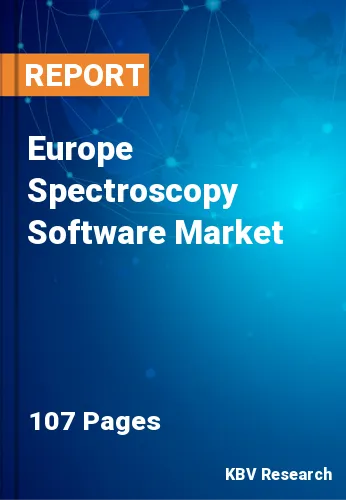The Europe Spectroscopy Software Market would witness market growth of 8.8% CAGR during the forecast period (2023-2030).
Environmental scientists employ spectroscopy software to analyze the composition of air, water, and soil. It enables the detection of pollutants, assessment of environmental changes, and tracking of climate parameters. With growing concerns over climate change, this application is gaining more importance. Materials scientists use spectroscopy software to characterize materials at the molecular and atomic levels. This application is vital in the development of new materials with improved properties. The spectroscopy software is integral for quality control in the food and beverage industry. It aids in assessing the composition and safety of food products, ensuring adherence to regulatory standards.
Additionally, the adoption of spectroscopy software is on the rise, driven by several factors that include technological advancements, increased awareness, and regulatory demands. Industries such as pharmaceuticals, food and beverage, and manufacturing rely on spectroscopy software for quality control. It contributes to consumer safety by ensuring that items fulfill the necessary standards and specifications. Academic and research institutions widely employ spectroscopy software for scientific investigations. It aids in understanding the composition and structure of various materials, enabling groundbreaking discoveries and innovations.
The demand for spectroscopy software has grown in France in response to the country's vibrant academic community. The French National Centre for Scientific Research (CNRS) is a prominent example of institution utilizing spectroscopy software to analyze various materials, from polymers to biological samples. The software's ability to provide detailed spectral information contributes to nanotechnology and life sciences advancements.
Additionally, the European Union's Horizon 2020 program has been a driving force in promoting research and innovation across member states. Spectroscopy software-related projects have received funding under various Horizon 2020 calls, supporting collaborative efforts that transcend national boundaries. The emphasis on developing technologies that address global challenges has contributed to the growth of the market by fostering cross-border research initiatives. All these initiatives and support programs will also aid in expanding the regional market in the coming years.
The Germany market dominated the Europe Spectroscopy Software Market, By Country in 2022, and would continue to be a dominant market till 2030; thereby, achieving a market value of $108.5 million by 2030. The UK market is showcasing a CAGR of 7.9% during (2023 - 2030). Additionally, The France market would register a CAGR of 9.7% during (2023 - 2030).
Based on Deployment Mode, the market is segmented into On-premise, and Cloud. Based on Application, the market is segmented into Food Testing, and Environmental Testing. Based on countries, the market is segmented into Germany, UK, France, Russia, Spain, Italy, and Rest of Europe.
Free Valuable Insights: The Global Spectroscopy Software Market will Hit USD 1.8 Billion by 2030, at a CAGR of 9.1%
The market research report covers the analysis of key stake holders of the market. Key companies profiled in the report include Danaher Corporation, Thermo Fisher Scientific Inc., Shimadzu Corporation, Genedata AG, Waters Corporation, ABB Group, Agilent Technologies, Inc., SpectralWorks Ltd., Bruker Corporation, and Lablicate GmbH.
By Deployment Mode
By Application
By Country
Our team of dedicated experts can provide you with attractive expansion opportunities for your business.

